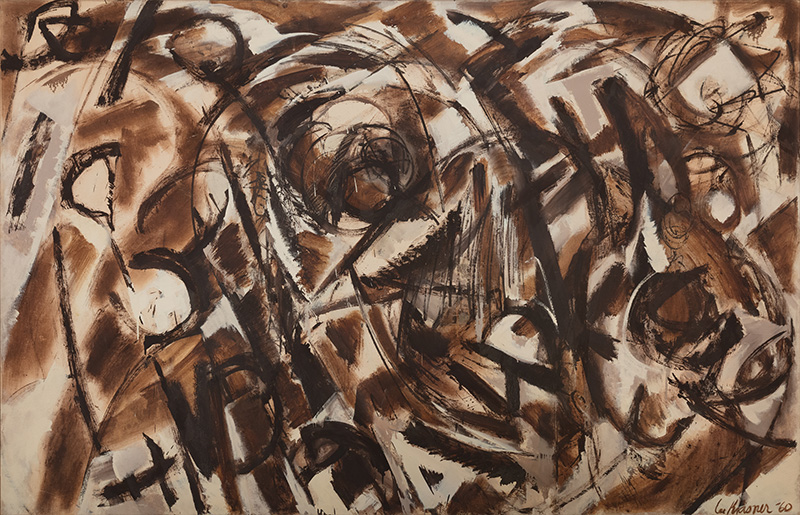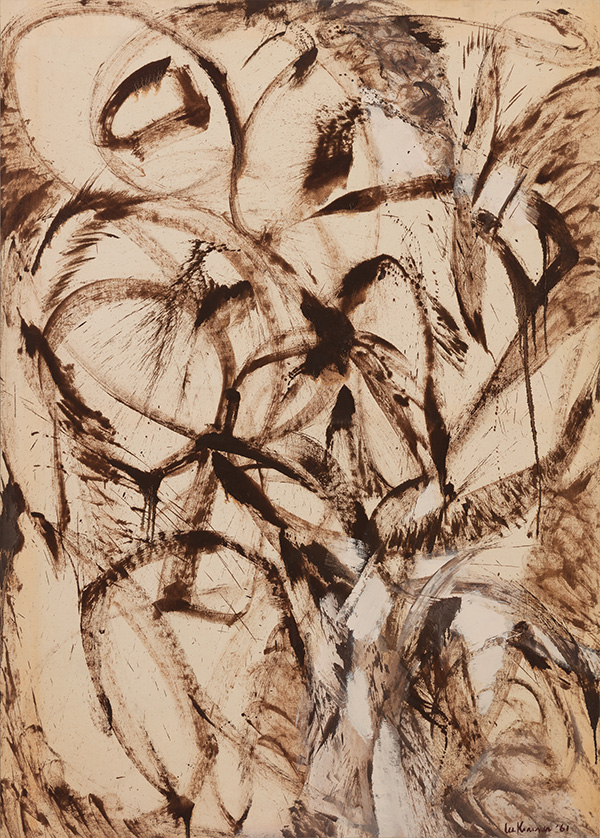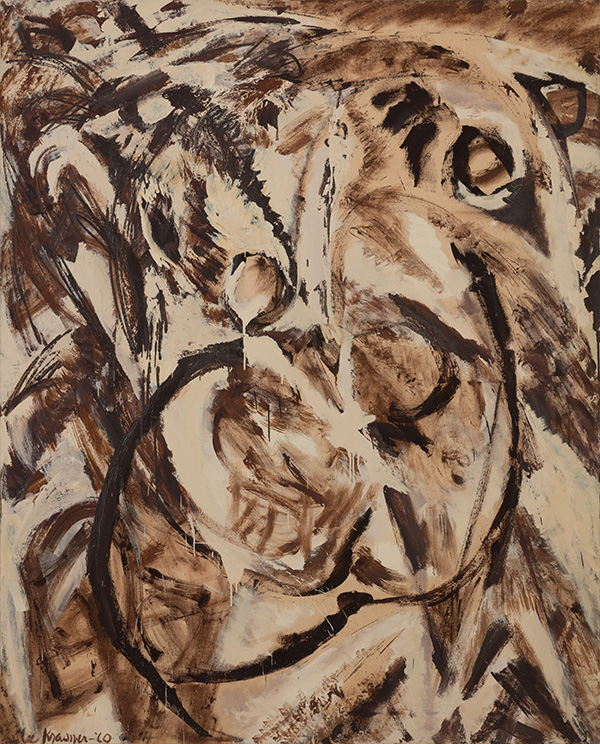ART-PRESENTATION: Lee Krasner-Umber Paintings
 Lee Krasner was the only woman among originators of Abstract Expressionism, she nevertheless found relatively little recognition until some years after the 1956 death of her husband, Jackson Pollock. Lee Krasner’s life was a struggle laden with anti-Semitism and sexism, she also supported her husband through his alcoholism, depression, and infidelities until he died in 1956.
Lee Krasner was the only woman among originators of Abstract Expressionism, she nevertheless found relatively little recognition until some years after the 1956 death of her husband, Jackson Pollock. Lee Krasner’s life was a struggle laden with anti-Semitism and sexism, she also supported her husband through his alcoholism, depression, and infidelities until he died in 1956.
By Efi Michalarou
Photo: Paul Kasmin Gallery Archive
The exhibition of works by Lee Krasner at Paul Kasmin Gallery focuses on her “Umber Paintings” series (1959-62). The series consists of 24 paintings, 8 of which are held in major Institutional Collections. Krasner helped found American Abstract Artists in 1936, a group working to promote abstract art. Among the small vanguard of abstract artists, she was known and respected- to a degree. As a woman she always faced challenges within a macho art culture dominated by men. Hoffman once described her work as being so good you couldn’t tell it was made by a woman. As she said in an interview “The only thing I haven’t had against me was being black, I was a woman, Jewish, a widow, a damn good painter, and a little too independent”. It was then that she met Pollock, moving in with him in 1941. The pair married in 1945, and the duties of promoting and managing the practical aspects of Pollock’s career fell to her. While Krasner generously embraced her new responsibilities, it meant her own career took a back seat to the increasingly famous Pollock. Krasner never stopped creating during her 11-year marriage to Pollock. Throughout their time together, Krasner struggled with his pronounced alcoholism and womanizing. Painted between 1959 and 1962, Krasner’s “Umber Paintings” were realized during one of her most ambitious periods of creative production following the sudden and tragic loss of her husband, Jackson Pollock. During this time of newfound solitude, Krasner moved into Pollock’s studio at their home in the Springs, East Hampton, which enabled her to experiment on large canvases for the first time. In addition to the increase in scale, this period was also characterized by a further commitment to ‘allover’ compositions, an emphasis on gesturality and an engagement with the individual psyche. By the end of the ‘50s, Krasner’s emotional turmoil, engendered by not only Pollock’s death, but also her mother’s recent passing, caused the artist to suffer from severe and chronic insomnia that confined her to work only at night under artificial light. It is under these unusual conditions that Krasner came the closest to embodying Pollock’s signature style, yet in her own singular posture of fiercely composed abstract forms, explosive brushwork and a refined, nuanced palette of umber, cream and white. As a result “Umber Paintings” convey a distinctive rawness and intensity that was unprecedented in her oeuvre until this point and remain lauded as the artist’s most psychologically evocative works. In “Fecundity” (1960), Krasner establishes a mature vocabulary of a reduced palette and maximizes the dynamism of her composition. Quasi-abstract forms emerge from a vortex of fervent brushwork, diagonally spanning the composition. The work is emblematic of a heightened painterly confidence and technical sophistication, evidenced by the integration of sprays and arcs with drops and nodules of paint. At once unruly and lyrical, “Moontide” (1961), is animated by Krasner’s individual and newly powerful backhand gesture, advancing in a rhythmic motion from right to left in vast, curvilinear sweeps that result in interlaced bold forms of black, umber and white.
Info: Paul Kasmin Gallery, 293 Tenth Avenue, New York, Duration: 9/11/17-13/1/18, Days & Hours: Tue-Sat 10:00-18:00, www.paulkasmingallery.com


